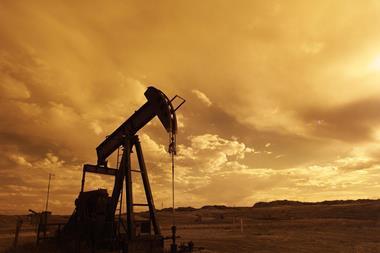The world remains on course for a 4.1°C temperature rise as developments in the oil and gas industry have been offset by a slowdown in low-carbon investments, according to Schroders.
Capital investment in the oil and gas industry fell sharply in the last quarter of 2017, the period covered by the asset manager’s update to its climate change tracking analysis.
“The oil and gas industry could be starting to translate the growing pressure it is facing into a strategic response,” said Andrew Howard, head of sustainable research at Schroders.
“There is further to go but the change is encouraging. Time will tell whether [capital] discipline holds with rising prices.”
The asset manager considered that the changes in the oil and gas industry would translate into a projected temperature rise of 3.9°C, down from 5.3°C.
However, a marked fall in investment in clean energy technologies offset this effect, according to Schroders.
It cited data from Bloomberg New Energy Finance showing that, in late 2017, clean energy investment had fallen to 2010 levels. In October 2017 the Climate Policy Initiative (CPI) released analysis showing a 12% drop in global investment levels for 2016.
Howard said: “The challenge of encouraging capital into climate solutions on the necessary scale has attracted a lot of attention from policymakers and environmental groups and, while plans are typically ambitious, tangible action remains more elusive.”
Schroders’ ‘Climate Progress Dashboard’ primarily uses data from CPI, a not-for-profit think tank.
Keeping the global temperature rise to a maximum of 2°C over pre-industrial levels is the target that governments from around the world set as part of the 2015 Paris Agreement. It is widely agreed by scientists to be the threshold beyond which climate change risks become unacceptable or the impacts too damaging. The text of the Paris Agreement itself refers to keeping temperature increases to a maximum of 2°C and ideally 1.5°C because “this would significantly reduce the risks and impacts of climate change”.
Schroders’ previous analysis, which was based on various indicators as at the third quarter of last year, also pointed to a 4.1°C temperature increase.
In a recent report consultancy firm McKinsey said CO2 emissions would plateau by 2030 and “remain far from a 2°C pathway”.
BP’s recent energy outlook outlined the ‘most likely’ trajectory for global energy markets over the next 20 years which, like Schroders’ analysis, was based on various assumptions and judgements.








